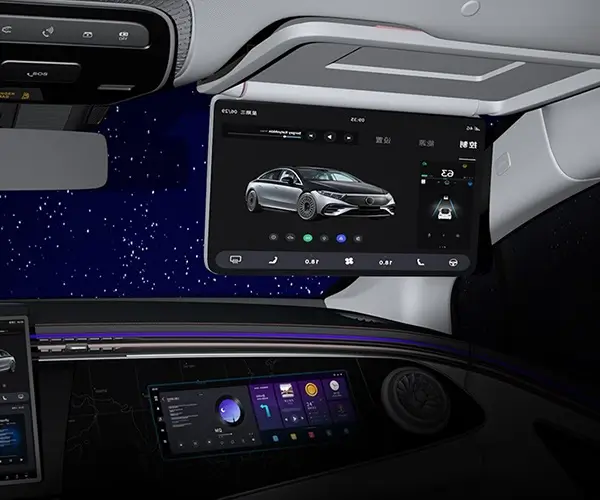Unlocking Mechanical Majesty: How Servo Motors Drive Innovation in Robotics
In the dynamic realm of robotics, where precision meets innovation, servo motors stand out as one of the most influential components shaping the future. These compact yet powerful devices act as the nervous system of many robotic systems, translating complex commands into smooth, accurate movements. From prosthetic limbs to advanced industrial robots, servo motors are the heartbeat that keeps automation alive and thriving.

The Essence of Servo Motors
At their core, servo motors are electric motors paired with a sophisticated control system. Unlike simple motors that spin with a fixed speed, servo motors are designed to achieve precise rotational or linear position, speed, and torque. They’re equipped with feedback devices—commonly encoders or resolvers—that continuously send position data back to the controller, ensuring the motor’s output matches the intended command with minimal deviation.
The defining characteristic of a servo motor is its closed-loop control system. This feedback mechanism allows for dynamic adjustments, enabling the motor to respond rapidly to changing commands and maintain high accuracy even under load variations. This capability is what makes the servo motor indispensable in applications where precision is paramount.
Types of Servo Motors in Robotics
Servo motors in robotics come in various forms, each tailored for specific applications:
AC Servo Motors: Known for their high power output and efficiency, AC servos are suitable for large-scale industrial robots performing heavy-duty tasks. They operate on alternating current and often feature robust construction for durability.
DC Servo Motors: These are common in smaller, more sensitive robotic applications, offering ease of control and quick response. They typically operate using direct current and are favored in hobby robotics and precise servo systems.
Brushless DC (BLDC) Servo Motors: An evolution of traditional DC motors, BLDCs eliminate brushes, reducing maintenance and increasing lifespan. They provide smooth motion and high efficiency, making them ideal for high-performance robotics.
Stepper Versus Servo: While stepper motors are often confused with servos, they are inherently different. Steppers move in discrete steps and lack feedback mechanisms, making them less accurate in dynamic environments. Servos, with their closed-loop control, excel in applications demanding high precision and responsiveness.
The Role of Servo Motors in Robotic Movements
In the tapestry of robotic movement, servo motors serve as the intricate thread weaving together complex actions. Whether it’s a robotic arm reaching for an object, a drone adjusting its flight path, or a humanoid robot mimicking human gestures, servo motors provide the control finesse needed for lifelike and efficient motion.
For instance, in robotic arms used in manufacturing, multiple servo motors control each joint—shoulder, elbow, wrist—to coordinate seamless movement. The real-time feedback ensures that each segment moves with impeccable accuracy, even under varying load conditions. This precision accelerates production, enhances quality, and increases safety by reducing errors.
Advantages of Using Servo Motors in Robotics
Why are servo motors so prevalent in robotics? Their advantages are compelling:
High Precision and Accuracy: Thanks to feedback control, servo motors reach target positions with remarkable exactness.
Fast Response Time: They respond swiftly to commands, enabling quick adjustments during operation—crucial for real-time control in dynamic environments.
High Torque at Low Speeds: Many servo motors provide substantial torque even at minimal speeds, facilitating delicate or powerful movements.
Compact and Lightweight: Modern servo designs are often compact, allowing for lightweight robotic structures that can move swiftly and with agility.
Energy Efficiency: Especially in brushless variants, servo motors consume power efficiently, reducing operational costs.
Challenges and Considerations
Despite their advantages, integrating servo motors into robotic systems involves careful planning. Factors such as motor size, power requirements, control complexity, and cost must be balanced against the desired performance. Moreover, effective servo control demands compatible drivers and sophisticated programming, which can be a barrier for beginners.
Additionally, servo motors generate heat and wear over time, factors that influence maintenance schedules. Proper thermal management and regular calibration are essential to sustain their performance.
The Future of Servo Motors in Robotics
As robotics continues its exponential growth, so too will servo motor technology. Innovations in materials, miniaturization, and control algorithms promise even more precise, efficient, and robust servo systems. For example, integrating artificial intelligence with servo control can lead to autonomous robots capable of learning from their environments and improving their movements over time.
Wireless connectivity and smart actuator systems are emerging as well, offering remote diagnostics and adaptive control in real-time. These advancements will unlock new horizons—from surgical robots performing life-saving procedures to autonomous vehicles navigating complex terrains—all powered by the steady, precise pulse of servo motors.
Would you like to see the second part, which will delve into specific applications, innovations, and future trends in servo motors for robotics?
Leveraging innovations in modular drive technology, Kpower integrates high-performance motors, precision reducers, and multi-protocol control systems to provide efficient and customized smart drive system solutions.




































